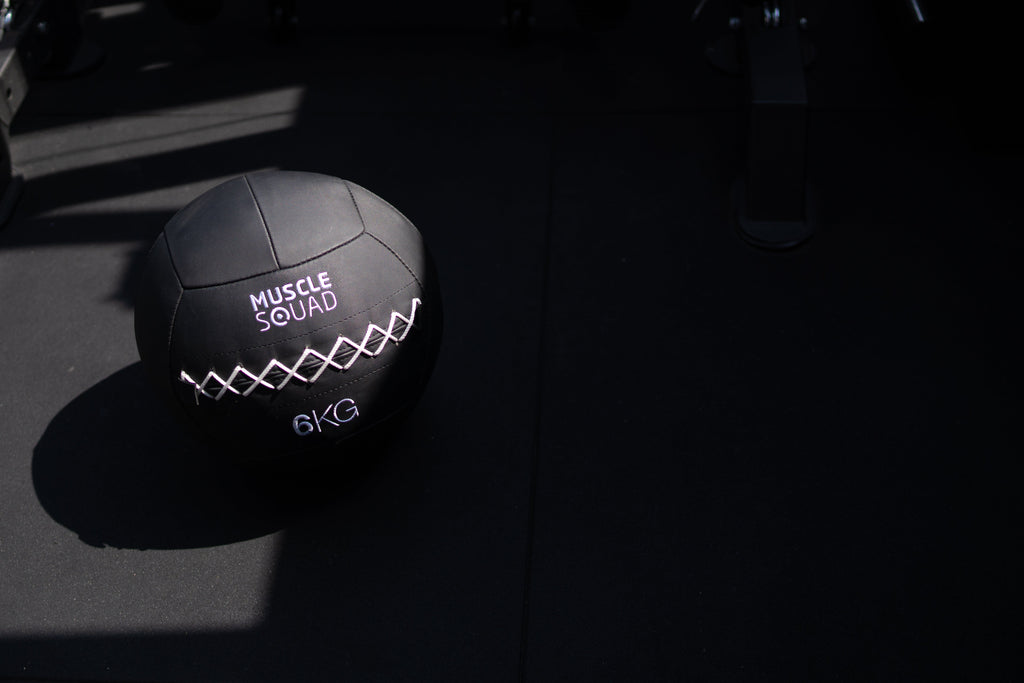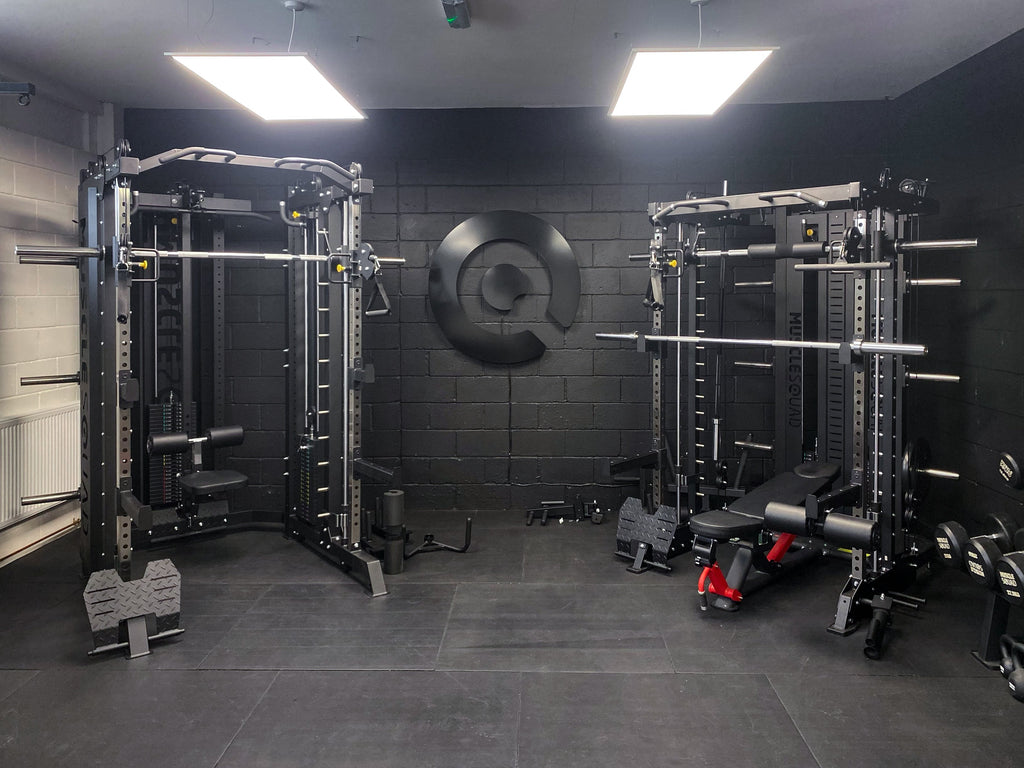At first glance, slam balls and wall balls might look like close cousins in the gym — both are weighted balls, both can be used for tough sessions and both will leave you gasping for breath if you push hard enough.
But the truth is, they’re built differently and serve different purposes. Let’s break it down so you know which one deserves a spot in your training space.
Slam Balls
Tough, rubber-coated and sand-filled, this versatile piece of equipment is designed to be picked up and, you guessed it — slammed into the ground. Unlike a wall ball, they have no bounce to them, which makes them part of the appeal. Every rep requires you to get down to grab the slam ball, then push yourself upwards to slam the ball down with great effort — making it a perfect mix of cardio and strength.

Best for:
- Explosive power training
- Conditioning circuits
- Core-focused movements
Popular exercises:
- Overhead slams (great for releasing stress, too!)
- Rotational slams for the obliques
- Squat-to-slam combos for a full-body burn
Because they’re so durable, you won’t have to worry about breaking them when training aggressively. If you want high-intensity work that spikes your heart rate, slam balls are the go-to.
Wall Balls
These have exploded in popularity recently as HIIT and circuit training competitions have grown. Compared to slam balls, these are larger, softer, fabric-filled balls with a reinforced outer shell, designed to be thrown repeatedly against a wall or target without tearing apart.
The classic wall ball movement is the wall ball shot: squat down holding the ball, then explosively stand and throw it upwards at the target, catching it on the way down before repeating. It’s brutal, effective and works your legs, core, shoulders and lungs all at once.

Best for:
- Building stamina and endurance
- Functional full-body strength
- Competition-specific training
Popular exercises:
- Wall ball shots
- Partner passes
- Thrusters with the ball
These are about efficiency and volume — perfect if you’re looking to condition your whole body in a more controlled, repetitive way.
Key Differences
Durability. Slam balls are designed for impact with the ground. Wall balls are built for repetition against a wall target.
Bounce. Slam balls don’t bounce (on purpose). Wall balls have a soft rebound that makes them easier to catch.
Size & feel. Slam balls are smaller and increase in size the heavier the weight. Wall balls are bigger, softer and stay the same size no matter which weight you choose.
Training goal. Slam balls are for explosive power and conditioning. Wall balls are for endurance, stamina and competition practice.
Can You Swap Them?
Technically, you can do some crossover. You could use a slam ball for wall throws, but it won’t any bounce and may feel uncomfortable to catch. Similarly, you can slam a wall ball — but it’ll wear it down quickly and it’s not designed to take that kind of beating.
Bottom line is each ball has its lane. If your training is focused on raw conditioning and explosive movements, go with the slam ball. If you’re preparing for competitions or want higher-volume cardio-strength work, the wall ball will be your best friend.
Which One Should You Choose?
- Home gym, limited space, want to sweat fast? Slam ball.
- Training for a competition or want structured cardio strength? Wall ball.
- Want variety? Honestly, having both opens up a huge range of workouts.
To Sum Up
Slam balls and wall balls aren’t rivals — they’re teammates with different specialities. Think of slam balls as your “explosive finisher” tool and wall balls as your “engine-building endurance” tool. Together, they can seriously elevate your training.
💡 Pro tip: If you’re building your gym, start with one based on your goals, then add the other later for variety.
So — are you team Slam Ball or team Wall Ball?

 Aug 19, 2025 - Luke Whitburn
Aug 19, 2025 - Luke Whitburn


Leave a comment: